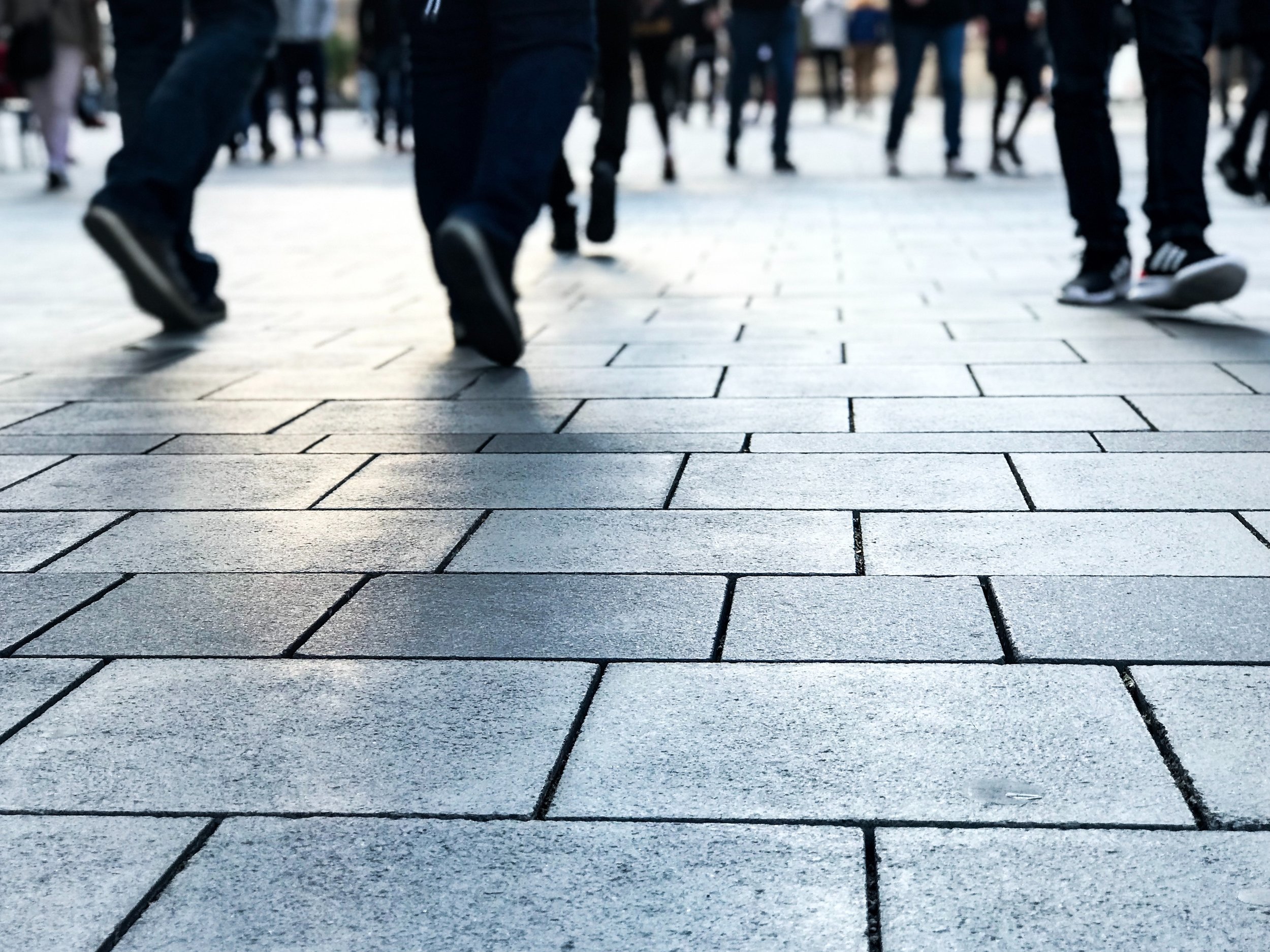Pedestrian Infrastructure
Pedestrian Infrastructure
How we get to where we live, work, learn, and play has a direct impact on the health of our communities. However, only 11% of all trips in the United States are taken by foot[1]. The way our roads, streets and day to day environment are structured is linked to health and risk factors such as obesity and high blood pressure[2]. Children who live in more walkable neighborhoods are healthier than children in neighborhoods where it’s hard to get around on foot[3]. Making it easier for pedestrians to get around is at the core of increasing physical activity and getting all the associated health benefits of walking[4].Communities who make a concerted effort can increase physical activity by making walking an easier and safer choice[5]. Local governments can play a key role in making sure the built environment supports the healthiest community possible.
Implementation Strategies
+ Complete Streets
Complete Streets allow for safe transit for every mode of transportation, be that walking, cycling, using public transit or driving. Each community may implement Complete Streets in different ways, but at its core Complete Streets is about accessibility in all modes of transit
- Complete Streets can provide opportunities for increased physical activity in addition to reduced obesity and an improved sense of community 6.
- “When streets are designed only for cars, they deny people the opportunity to choose more active ways to get around, such as walking and biking. [7]”
Resources:
- What Works for Health: Complete Streets & streetscape design initiatives
- Mobilize for Health: Strategies, Complete Streets
+ Sidewalk Width
Sidewalk width effects the ease of use for pedestrians and impacts whether or not multiple people can easily access sidewalks at the same time.
- Providing safe, comfortable street environments can increase physical activity and the width and design of sidewalks is a key part of the street environment [8].
- Walking is a social activity. Appropriate sidewalk width ensures that people can walk together [9].
+ Shorter Blocks
The length of blocks impacts pedestrians’ ability to easily navigate communities on foot. Long blocks mean that getting to a business across the street requires extra time or may make people choose not to go to the business
- How long a city block is impacts pedestrians’ ability to move about freely. Long city blocks are harder to cross and increase vehicle speed.
- Shorter blocks and more crossings provide flexibility and options for pedestrians. This makes walking more direct and convenient by offering more opportunities for pedestrians to safely access destinations around their community [10]
+ Mixed Land Use
Mixed land use means that communities are developed so that shops, homes, businesses, recreational facilities and parks all can be found near each other instead of being segregated by land use. This makes getting around by biking or walking easier for people and can even increase the perceived safety and vitality of public spaces.
- Mixed use development has a combination of uses rather than being built for one purpose. People walk and ride bikes more in areas made up of these types of developments [11].
- Mixed land use can also make an area more vibrant and make it feel safer because of the increased number of people on the street. More people also means shops in the area may see an increase in retail purchases [12].
Resources:
+ Free Drinking Water
Free drinking water gives people access to safe, drinkable water when they’re outside their homes
- Drinking water is good for overall health. In schools, providing free drinking water provides alternatives to sugar-sweetened beverages [13].
- “To promote plain water intake, free, safe drinking water should be more readily accessible to individuals in homes and public facilities such as parks, playgrounds, schools, public buildings, and worksites” [14].
+ Security in Outdoor Areas
Security in outdoor areas is important to help people feel comfortable spending time being physically active outdoors.
- People are more likely to visit parks that they perceive as safe. For example, a well-lit space or a space that doesn’t appear isolated can make it more inviting [15].
+ General Resources for Pedestrian Infrastructure
REFERENCES
[1] Moving Towards Active Transportation
[2] Role of Built Environments in Physical Activity, Obesity, and Cardiovascular Disease
[3] Infrastructure designed to encourage walking can help reduce childhood obesity
[4] Moving Towards Active Transportation
[5] WWFH: Bike & pedestrian master plans
[6] WWFH: Complete Streets & streetscape design initiatives
[7] Complete Street Fact Sheet
[9] FHWA Course on Bicycle and Pedestrian Transportation
[10] Pedestrian Friendly Code Directory: Short Street Blocks
[11] WWFH: Mixed-use development
[12] Mixed Land Use: Healthy Spaces Healthy Places
[13] CDC: Water Access
[15] How important is perception of safety to park use? A four-city survey


